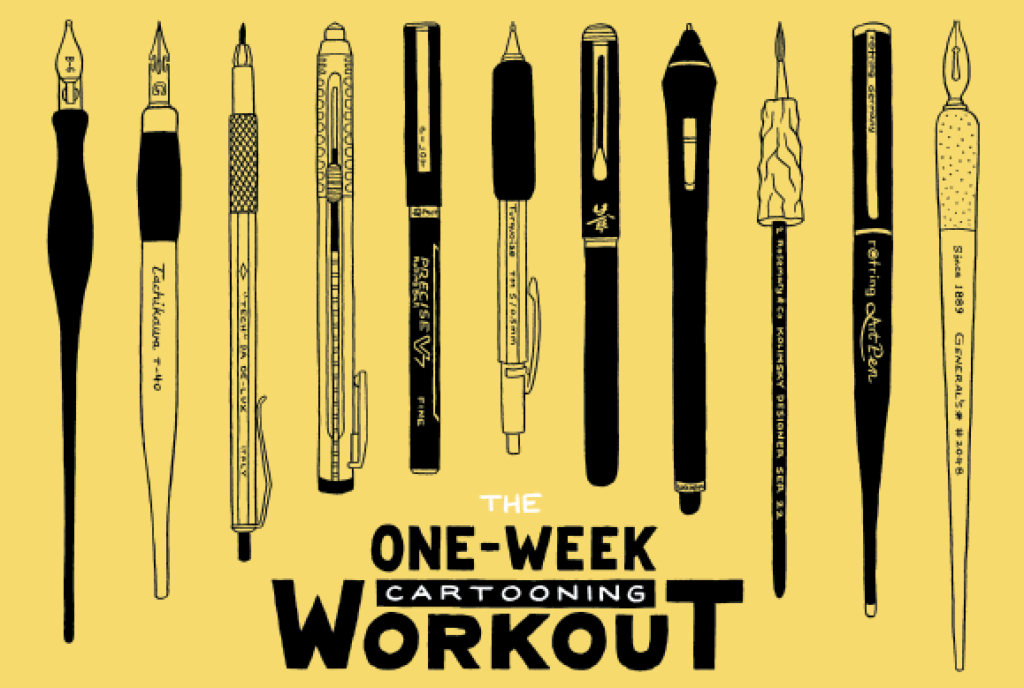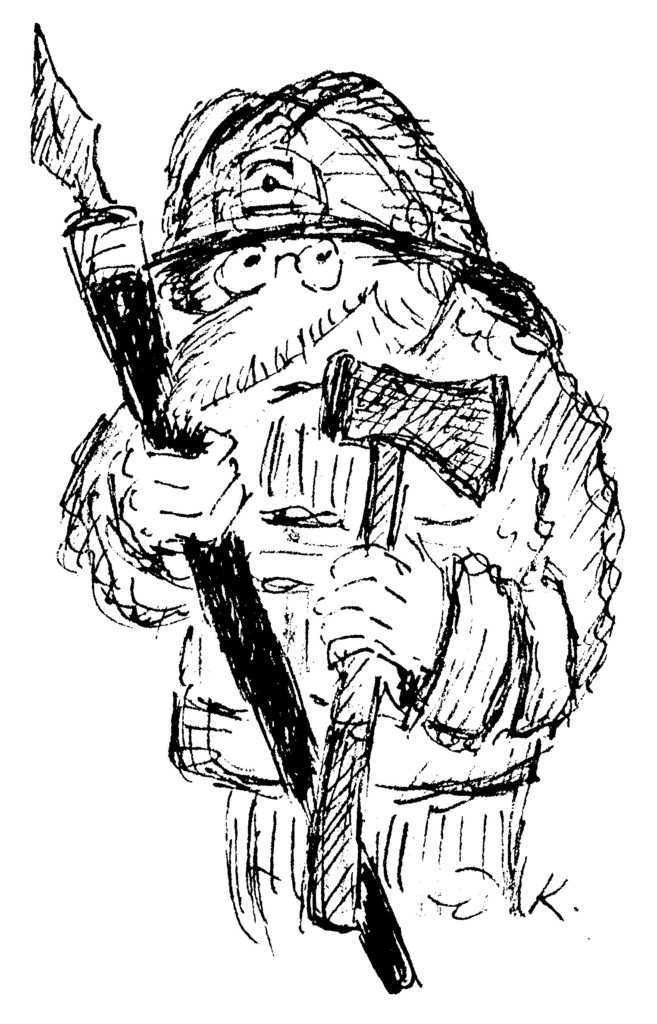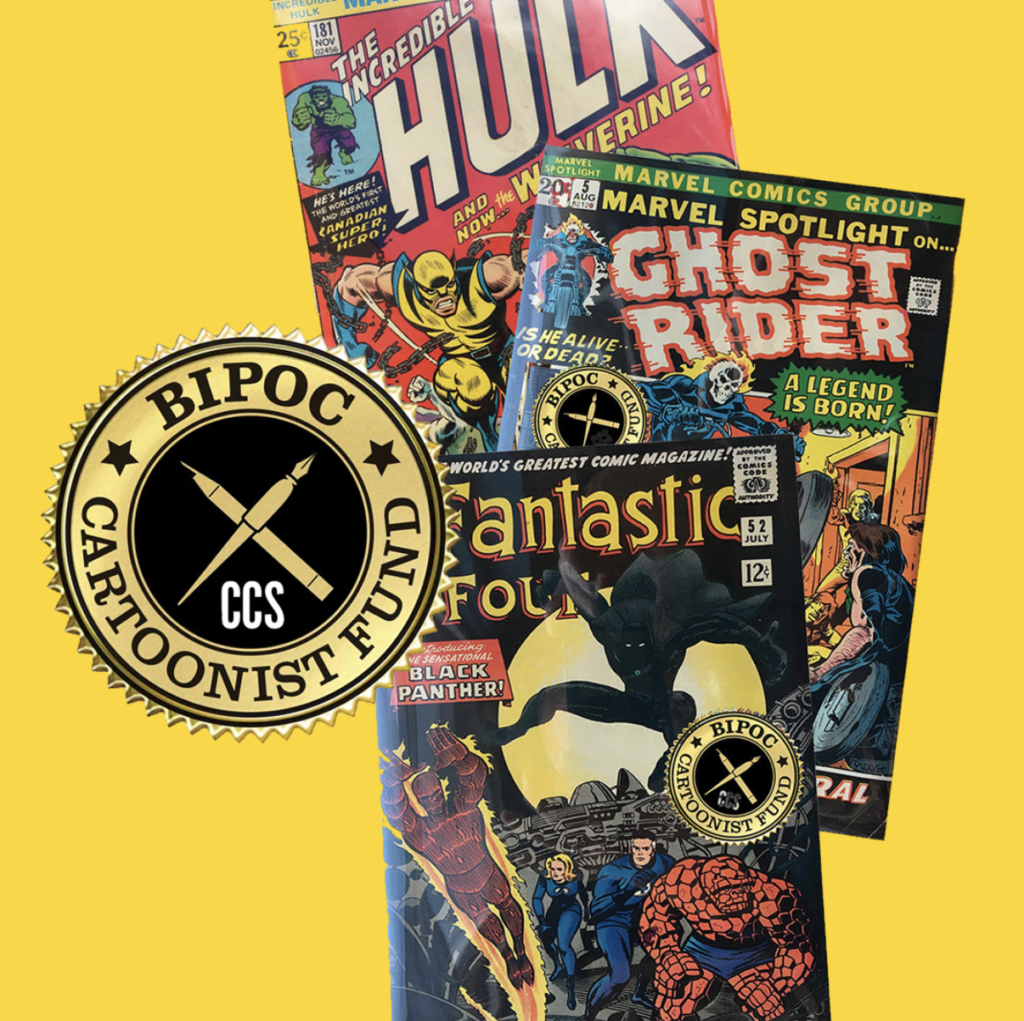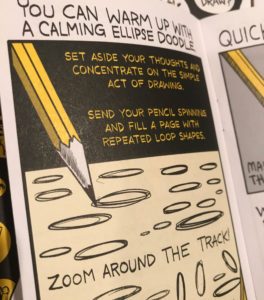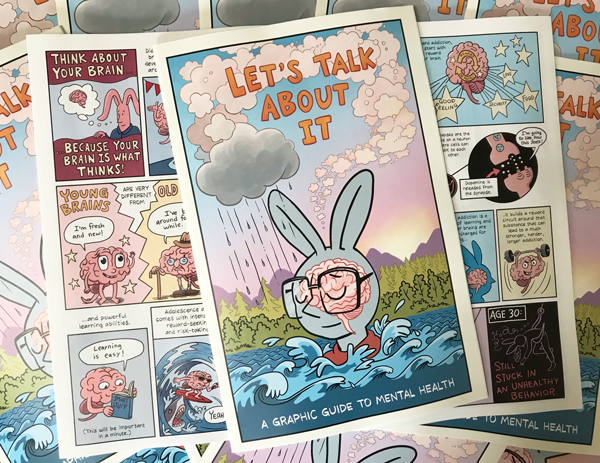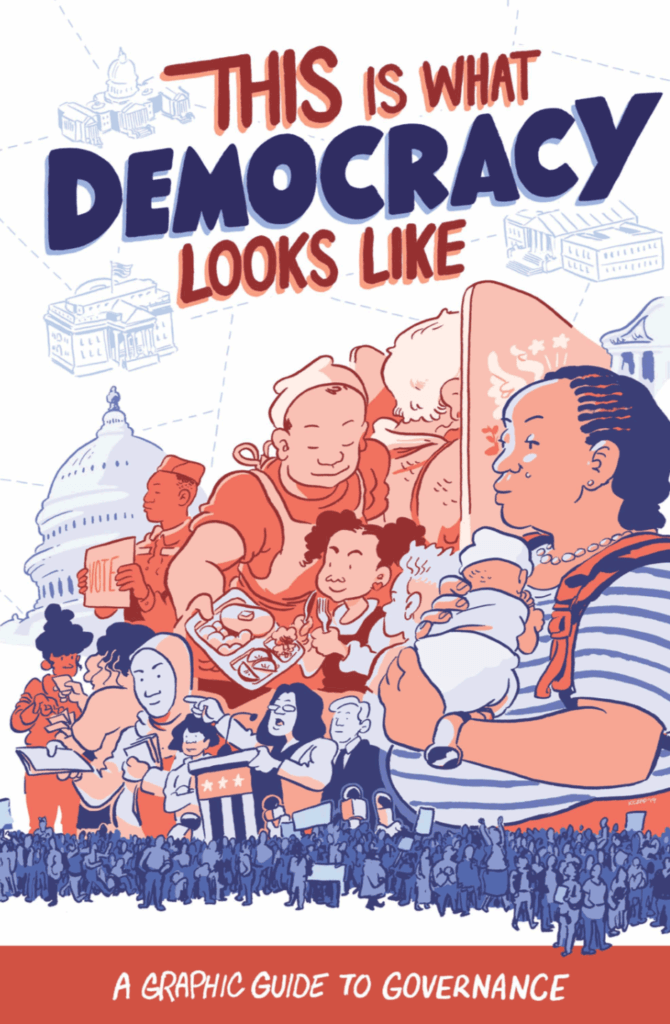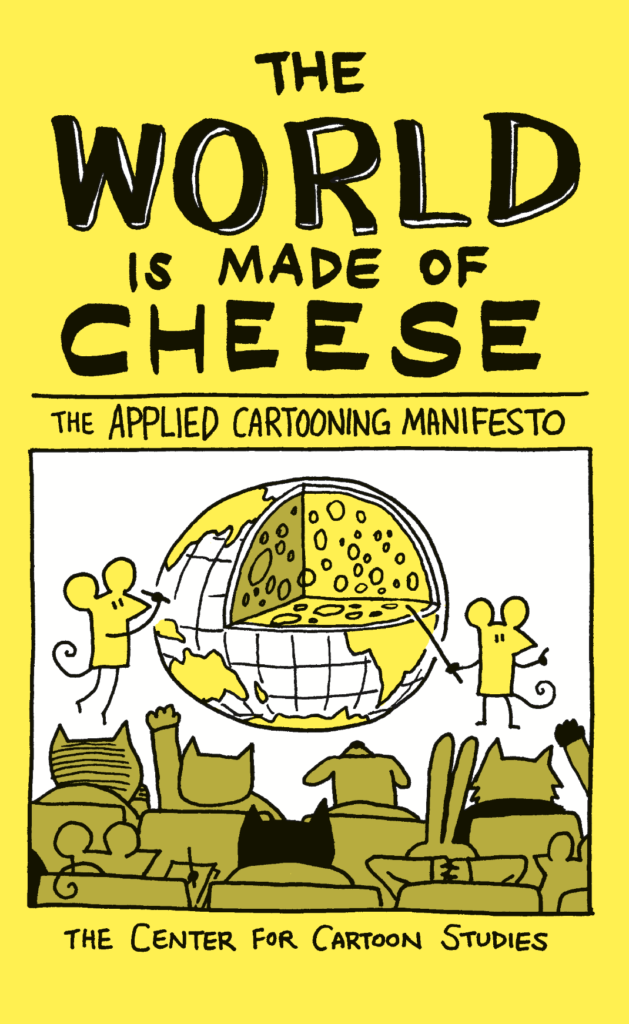Teaching Comics
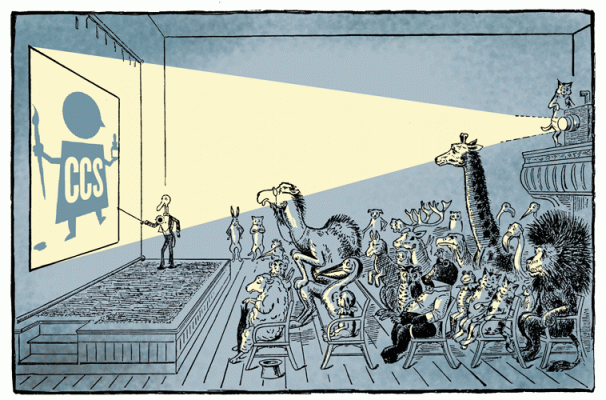
This page both archives teaching content from National Association of Comics Art Educators, along with dozens of additional teaching comics resources for all ages developed by The Center for Cartoon Studies community. In recent years the comics medium has flourished, generating much interest from the literary, art, and educational communities. This site will continue to expand with more content as it is developed. Recommended grades, along with Common Core subjects are noted on several resources.
For more information or suggestions, contact info@cartoonstudies.org
Teaching Resources
• Individual Exercises
• Complete Lesson Plans
• Study Guides and Handouts
• Complete Syllabi
• Books and Magazines
Teaching Resources
Individual Exercises
This section contains a list of short exercises. This material has been contributed by various cartoonists and educators. All items are available in printer-friendly adobe .PDF format.
• The Wrong Planet: Timing, Closure and Editing contributed by Paul Hluchan
• Design Vs. Drawing contributed by James Sturm
• It’s Easy as Changing the Film contributed by Patrick Welch
• Editing contributed by James Sturm
• Show Time Passing contributed anonymously
• Basic Storytelling… Lights, Camera, Action! contributed by Patrick Welch
• Intro to Lettering contributed anonymously
• Intro to Inking contributed anonymously
• Describing the Complex World contributed by Patrick Welch
• Silent Gag Cartoon Exercise contributed anonymously
• Poetry and Comics contributed by James Sturm
• Comic Strip: Character/Place/Situation contributed anonymously
• The Irony of Humor contributed anonymously
• Autobiography Do’s and Don’ts contributed anonymously
• Think Before You Ink contributed by James Sturm
• Scenes as Building Blocks contributed by Tom Hart
• 20 Questions for Characters contributed anonymously
• Intro to Caricature contributed anonymously
• Character Exploration Initial Writing Exercises contributed by Tom Hart
• Form and Chaos contributed anonymously
• A Definition of Comics contributed by James Sturm
• Closure Exercise contributed anonymously [ closure_handout ]
• Expressive Lettering and Balloons contributed anonymously [ lettering_template ]
• Iconographic Language in Comics contributed anonymously
• Cartoon Characters Doodled from Memory contributed by Ivan Brunetti
• Practicing Text-Image Relationships contributed by Christian Hill
Complete Lesson Plans
This section contains a list of lesson plans. This material has been contributed by various cartoonists and educators. All items are available in printer-friendly adobe .PDF format. Each lesson plan has, listed after its title, a grade range for which the exercise is most appropriate. Many lesson plans, though, can be modified to suit older or younger classes as needed.
- Little Orphane Annie: Leapin’ Through the Depression contributed by Joanna Boyd Richards [sample Annie strips .pdf 2.4MB]
- Teaching Literary Devices with Comics contributed by Nancy Frey and Doug Fisher [sample narrative .pdf 2MB]
- The Serious Business of Graphic Novels contributed by A. David Lewis [slideshow .ppt 8.5MB]
- Creating and Self-Publishing Your Minicomics contributed by Mac McCool
Study Guides and Handouts
This section contains study guides which are geared toward English/literature classes as well as a studio environment. Also available here are handouts useful for class discussion. Several of the study guides contain reading questions designed to facilitate the teaching of prominent comics works. All items are available in printer-friendly adobe .PDF format.
Study Guides:
• The Complete Peanuts Volume I by Charles M. Schulz contributed by Art Baxter
• Buddy in Seattle by Peter Bagge contributed by Ben Towle
• Above and Below by James Sturm contributed anonymously
• Locas: The Maggie and Hopey Stories by Jaime Hernandez contributed by Art Baxter
• Jimbo in Purgatory by Gary Panter contributed by Joel Priddy
• You Can’t Get There From Here by Jason contributed by Christian Hill
• Flies on the Ceiling by Los Bros Hernandez contributed by Rocco Versaci
• My Troubles with Women by Robert Crumb contributed by Rocco Versaci
• Ghost World by Dan Clowes contributed by Rocco Versaci
• Daddy’s Girl by Debbie Drechsler contributed by Rocco Versaci
• Sandman: Fables and Reflections by Neil Gaiman contributed by Rocco Versaci
• Palestine by Joe Sacco contributed by Rocco Versaci
• Watchmen by Alan Moore and Dave Gibbon contributed by Rocco Versaci
• Maus by Art Spiegleman contributed anonymously
Handouts:
• The Creation of a Page contributed by Tom Hart
• Three-Act Story Structure contributed anonymously
• Women in Comics: An Introductory Guide contributed by Trina Robbins
• Critique Talking Points contributed anonymously
• Usagi Yojimbo: Step by Step contributed by Stan Sakai
• Mix and Match Rows: Comics Handouts for Younger Students contributed by Ben Towle
• Comics Terminology contributed anonymously
• How To Read Nancy contributed by Mark Newgarden and Paul Karasik
Complete Syllabi
In this section you will find a number of complete course syllabi, most if which are intended for teaching at the undergraduate level. The syllabi are divided into sections for studio classes and non-studio classes and have been contributed by instructors from institutions such as Yale, The Savannah College of Art and Design, The University of Florida, and The Massachusetts Institute of Technology, as well as others.
- Comics As Literature contributed by Rocco Versaci
- Comics and Animation contributed anonymously
- Comics in American Culture contributed by Professor Touponce
- Media in Cultural Context: Comics, Cartoons and Graphic Storytelling contributed anonymously
- Survey of Sequential Art contributed anonymously
- Writing About Comics contributed anonymously
- Writing Scripts for Comics contributed by Mark Kneece
- Introduction to Comics Art: Gateway to Visual Storytelling contributed anonymously
- Reading Comics as Literature contributed by Isaac Cates
- Studies in Literature and Culture: The Graphic Novel contributed anonymously
- Comics Studio Class contributed anonymously
- Explore Chicago: The Art of Chris Ware contributed anonymously
- An Aesthetic History of Comics contributed by Dan Nadel
- History of Comic-Book Art contributed by Andrei Molotiu
- Image, Text, and Story: An Exploration of Graphic Novels contributed by Rachel Williams
Books and Magazines
The reference material here consists of books and magazines which may be useful to educators teaching classes in comics or cartooning. Most of the items listed are instructional in nature, but a few are critical or analytical texts relating to the cartooing artform; Scott McCloud’s Understanding Comics is probably the most well known of these. Several items listed are currently out of print, but reasonably priced copies can usually be located via bookfinder.com.
The Arbor House Book of Cartooning by Mort Greenberg
ISBN 0-87795-399-6
New Yorker cartoonist Greenberg shares his knowledge in this comprehensive volume. There seem to be thousands of these “how-to cartoon” books. This (along with Polly Keener’s book) is one of the better ones.
The Art of Comic Book Inking by Gary Martin
ASIN: 1569712581
Pretty good introduction to inking tools and concepts. Especially good at identifying methods of implying shade and weight on a human figure. A number of variations on the same pencils by differing comic book inking pros offer a good look at many ways a page can be successfully inked.
The Art of Dramatic Writing by Lajos Egri
ISBN: 0-671-21332-6
A seminal 20th century book on playwriting, and the introduction to the “dramatic statement” inherent in any play. The book is very instructive in looking at the elements of your story and examining which are contributing to the greater theme, and which are not. Like David Mamet’s book, it has little room for other opinions of how drama is constructed but certainly presents its own thesis clearly and completely.
Cartooning by Polly Keener
ISBN: 0131179128
Although geared towards gag cartooning and comic strips, this book offers a great deal of information from generating ideas to tools and techniques. Covers a lot of the same ground as The Arbor House Book.
Comics and Sequential Art by Will Eisner
ISBN: 0961472812
Taken from Amazon.com reader reviews: “Written years before Scott McCloud’s “Understanding Comics,” Will Eisner expounds upon how comics are a visual, reading experience using both words and pictures. He instructs the reader in how words and pictures can be used together to tell a story. The author must lead the reader with visual clues to each sequential image. Mood, emotion, even time can be expressed visually in a comic. Camera angles, panel borders, typefaces, all play a part in the effectiveness of a story.”
Comix 2000 by L’ Association Editors
Essential cross section (2000 pages) of silent comics from across the globe. Countless examples of innovative silent storytelling.
The DC Comics Guide to Pencilling Comics by Klaus Janson
ISBN: 0-8230-1028-7
Klaus Janson’s book is a distillation of all his techniques and theories. A great book divided into 3 parts: drawing, storytelling and pencilling. Drawing focuses mostly on human anatomy. In Storytelling, he discusses the art of panel juxtaposition, including a nuanced look at juxtaposing unrelated images. He also offers an extensive and detailed look at panel arrangement, including composition both on the page and within the panel. The pencilling section offers a look at Janson’s process on an entire short story, from script to finishes. Overall intelligent, humble, and masterful.
Drawing Comics Lab: 52 Exercises on Characters, Panels, Storytelling, Publishing & Professional Practices (Lab Series)
ISBN: 9781592538126
This easy-to-follow book is designed for the beginning or aspiring cartoonist; both children and adults will find the techniques to be engaging and highly accessible.Featured artists include:- James Stu
DRAW! Magazine Quarterly, published by: TwoMorrows Publishing
PO Box 2129
Upper Darby, PA 19082
This weighty magazine features numerous useful columns each issue. Past columns have included an extensive look at inking by Klaus Janson, a look at character design by Genndy Tartakovsky (creator of Cartoon Network’s Samauri Jack), an article on observation and set design by Batman set designer Paul Rivoche, and figure drawing by Brett Blevins.
Graphic Storytelling by Will Eisner
ISBN: 0961472820
From the publisher: “A companion to Comics & Sequential Art, this book takes the principles examined in that title and applies them to the process of graphic storytelling. Eisner shows comic artists, filmmakers and graphic designers how to craft stories in a visual medium. They’ll also learn why mastering the basics of storytelling is far more important than the hollow flash and dazzle seen in lesser work. Readers will learn everything from the fine points of graphic storytelling to the big picture of the comics medium, including how to: * Use art that enhances your story, rather than obscuring it * Wield images like narrative tools * Write and illustrate effective dialogue * Develop ideas that can be turned into dynamic stories. These lessons and more are illustrated with storytelling samples from Eisner himself along with other comic book favorites, including Art Spiegelman, Robert Crumb, Milton Caniff and Al Capp. “
The Hero with a Thousand Faces by Joseph Campbell
ISBN: 0691017840
Seminal and definitive look at world mythology and the “shared stories” therein. From African mythology, to Norse, to American Indian, the elements of myths are often similar. Campbell outlines these and as such, furthers Jung’s mapping of humanity’s unconscious hopes, desires and fears.
On Directing Film by David Mamet
ISBN: 0140127224
There is no better description (told in essay form and also transcribed dialogues with his students) of how to proceed from an idea to a no-nonsense visual, dramatic rendition of that idea. The book is a perfect expression of its goal to outline the thinking steps involved in planning out a scene or series of scenes. For Mamet, all the expression lies in the script and in the SHOT LIST. Even his use of actors (as people who just get up, hit their marks and say their lines and shut up) is extreme. Nonetheless, he is completely self-assured of his points of view, and in learning his method of outlining a scene before beginning the filming or drawing, I can’t imagine a better explanation.
Perspective for Comic Book Artists by David Chelsea
ISBN 0-8230-0567-4
Both an introduction and comprehensive course in perspective tailored specifically for Comic Book artists (and told in comics form.) People who don’t know perspective will finally learn what they’ve been doing right. Even those that think they know perspective will probably walk away with their heads spinning and full of new insights. Exhaustive and somewhat confusing if you don’t want to do the math.
Smithsonian Collection of Newspaper Comics by Bill Blackbeard
ISBN 0-87474-172-6
Essential introduction to the comic strips of the early 20th century.
Story by Robert McKee
ISBN 0-06-039168-5
One of the world’s premiere screenwriting teachers dissects and defines the elements of a story. Sort of the Understanding Comics for screenwriters.
Syllabus by Lynda Barry
ISBN 1-77046-161-2
Barry teaches a method of writing that focuses on the relationship between the hand, the brain, and spontaneous images, both written and visual. It has been embraced by people across North America—prison inmates, postal workers, university students, high-school teachers, and hairdressers—for opening pathways to creativity.
Wishes, Lies, and Dreams: Teaching Children to Write Poetry by Kenneth Koch
ISBN 0-05-080530-7
A classic in its field, this book is a vivid account of a poet’s experience teaching Manhattan schoolchildren to write verse. The book provides great ideas for creating assignments that excite students and get the creative juices flowing.
The Writer’s Journey: Dramatic Structure for Storytellers by Christopher Volger
ISBN: 0941188701
Overview of Joseph Campbell’s “Hero’s Journey” ideas and their use in Hollywood storytelling. Though simplistic, it is surprisingly useful if used correctly, meaning not as formulae, but as dramatic tools. Outlines a series of 12 steps in many stories — exemplified by Wizard of Oz but also evident in Titanic and surprisingly, even Tarantino’s Pulp Fiction. All in all a good job of cracking open the traditional story structure and peeking inside.
Writing Down the Bones by Natalie Goldberg
ISBN 0-87773-375-9
Lots of exercises to get writers going. Exercises, like the Kenneth Koch book, can be easily translated for a comic artist.
The Writing Life by Annie Dillard
ISBN 0-06-016156-6
A great writer writing about the creative process. Dillard offers bits of technical information but more importantly she lays out a realistic perspective on the trials and challenges of making art and the dedication needed to persevere.
Understanding Comics by Scott McCloud
ISBN: 006097625X
Comprehensive examination of the mechanics of the art form; from mapping of iconographic imagery to an new nomenclature for transitions between comic panels (and a mapping of those as well.) Great overview and introduction to the intellectual tools involved in creating comics.
Your Career in Comics by Lee Nordling
ISBN 0-8362-0748-3
If you want to make it as a comic strip artist, then this is the book for you. Nording looks at cartooning from three perspectives: the cartoonist’s, the newspaper editor’s, and the syndicate editor’s. He interviews dozens of professionals providing both a broad-based view of the art form and the nitty gritty of fashioning a solid comic strip.
Promoting a Comics Curriculum
One of the primary the goals of NACAE was to assist educational institutions and individual educators interested in establishing a comics art curriculum. The materials below are collected from various sources and outline some of the advantages of implementing sequential art/comics art classes and curricula.
- A Case For Comics contributed by James Sturm
- Seika University’s Department of Comic Art contributed by Matt Thorn
- How Comic Books Can Change the Way Our Students See Literature: One Teacher’s Perspective contributed by Rocco Versaci
- Comics in the Classroom contributed by James Sturm
- Interview with Michael Bitz of The Comic Book Project contributed by Christian Hill
Using These Materials
Q: How am I allowed to use the material on this page?
A: Unless otherwise noted, materials on this page are free to use, reproduce, and distribute as long as they are being used for non-commercial educational purposes. Please follow these guidelines when using these materials:
- You may not use any materials contained on this site for commercial purposes
- You must attribute the work as described below
- If you alter, transform, or build upon this work, you may distribute the resulting work only under a license identical to this one.
- To properly attribute content copied, distributed or displayed from this site, include the following information: Copyright © [name of originating author] via NACAE
